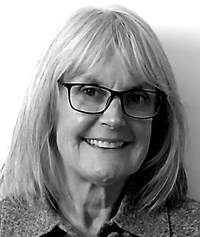
Journal Reviews
Correlation between middle ear and mastoid volumes with results of type 1 paediatric tympanoplasty
This is a retrospective study of 45 paediatric patients, aged between eight and 18 years, who underwent Type 1 cartilage graft tympanoplasty using conchal cartilage. Middle ear and mastoid volumes of these children were correlated with anatomical and functional outcomes...
How interaural level differences differ between children with bilateral cochlear implants and their normally-hearing peers
A group in the Netherlands investigated interaural level differences (ILDs) in children who were bilaterally implanted with cochlear implants (CIs) and compared their performance to their normally-hearing peers. ILDs are used to localise sound and rely on the high-frequency cues....
Balloon Eustachian tuboplasty – is it time to start doing it in children?
Given the potential applications for balloon Eustachian tuboplasty (BET) in children, its uptake in most centres has been slow. The reasons for this are multifactorial. There are technical issues – the feasibility of obtaining the correct size balloon and manoeuvring...
Identification of congenital hearing loss in Saudi Arabia
It has long been recognised that timely recognition of congenital hearing loss allows for the morbidity of hearing loss to be minimised. Due to the difficulties with identifying hearing loss in babies, combined with readily available screening technologies, many countries...
Tonsillectomy in or out?
Although tonsillectomy is the most common surgical act performed in ENT practice, there is still some concern about the safety of outpatient or day surgery scheduling, especially in adults. Although this has been common practice in many departments for some...
The snotty child?
This article is interesting for those of us who see children regularly in secondary care but rarely see them with chronic rhinosinusitis. The authors remind the reader of the EPOS guidelines for diagnosis of CRS in children: two or more...
Association of childhood OME with obesity
Many factors influence the development of otitis media with effusion (OME) in children, some of them being increased plasminogen factor inhibitor (PAI-1) levels, eustachian tube obstruction and gastro-oesophageal reflux. These factors are also associated with obesity. Sixty children with mean...
Paediatric nasopharyngeal carcinoma
Between 11 and 18% of nasopharyngeal carcinomas (NPC) occur in the paediatric age group but there are no specific management guidelines for this age group. Tunisia is a region with an intermediate incidence of NPC, the authors studied 40 cases...
Diagnosis of obstructive sleep apnoea hypopneoa syndrome (OSAHS) without sleep studies
Polysomnography is considered the ‘gold standard’ in the diagnosis of sleep apnoea but it is expensive and difficult to perform in children. Diagnosis based on subjective judgement is often inaccurate. An accurate diagnostic scale based on clinical parameters could obviate...
Which factors affect music involvement in implanted children’s everyday life?
During the last few years, cochlear implantation research has included music. Processing strategies and rehabilitation teams are now interested in music appreciation by implantees, as speech perception and production are no longer the only issues or targets. The present study...
Is the lack of sunshine the reason behind allergic rhinitis?
Deficiency in Vitamin D, an in vogue immunomodulator, has been shown in emerging data to have a substantial pathogenetic role in allergic related diseases, particularly asthma. The concept of a shared upper and lower airway has allowed the natural extrapolation...
Bone anchored implant stability predicted one week after implantation
Bone conduction (BC) devices can now be implanted as a single stage procedure with minimal soft tissue thinning to reduce the complications in the surrounding skin. The question of optimal loading time has to my mind not been answered. Here...

















